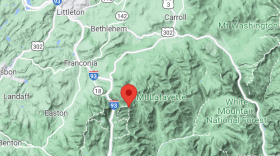Bobcats have been all over the news lately. It's kind of amazing to think that 30 years ago wildlife biologists estimated there were only 150 bobcats in New Hampshire. That's not the case anymore - their numbers are now estimated to be around 1400! How did these cats make such an impressive recovery?
Hunting & Trapping Banned
For about 200 years it was open season on bobcats, and up until 1973 they had bounties on their heads. Hunting and trapping was closed altogether in 1989. The bobcats weren't alone; there were also bounties on wolves and other predator species. There was a fear that they would take too much wild game and domestic livestock.
Where's a good place to eat around here?
There has been a shift in diet for bobcats due to habitat changes. In the 50's and 60's they ate more cottontail rabbit, grouse, and deer fawns that were found in abandoned farmland. As the landscape began to change, so did the bobcat's eating habits. Now maturing forests provide more small mammals and birds including a growing number of wild turkey.
Bobcats are still hunters. They don't stalk their prey, they figure out where prey is likely to hang out and wait patiently until their meal arrives. Some people have caught glimpses of the cats stationed beneath their bird feeders. Younger or less experienced bobcat will figure out that's an excellent winter food source.
Herding Cats
Catching a glimpse of a bobcat isn't a common occurrence - they see you well before you see them. How do researchers manage to get a headcount if the cats are so hard to find? Wrangling wild cats is about as easy as organizing the house of representatives, but that doesn't stop biologists. At UNH they worked with local trapping experts to capture bobcats and fit them with radio telemetry collars. That allowed the researchers to track bobcat movements, their home ranges, and barriers like highways. The collars have a GPS transmitter and data logger on board. After a period of time, the collar will release itself from the animal, allowing researchers to retrieve it and analyze the data collected. They can use that data to estimate numbers and locations.
A bobcat requires about 15 square miles and there's about 1000 square miles of really good potential bobcat habitat. Researchers do the math - arriving at about 1400. They've been spotted at a car dealership in Stratham and an island on the Merrimack river in Manchester, but their stronghold is in the Monadnock region, the Lakes Region, and along the Connecticut River.
A lot of folks seem to confuse the bobcat with the Canada Lynx, but the only place you find the latter is in the northern part of the state. The farther north you go, bobcats gradually give way to lynx. When you put them side by side the differences become apparent. Lynx have longer legs and bigger paws, better suited to the deep snow.
Check out this cooperative project between UNH and NH Fish and Game to learn more about bobcats in New Hampshire.










